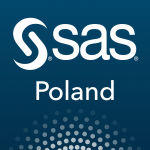4 dominant trends can be distinguished in the development of Business Intelligence tools and in the way they are used in modern organisations. These trends will evolve into directions of development for these tools, changing their role in supporting decision processes and building competitive advantages.
Trend 1: Self-service models
The increased use of BI in enterprises for delivering management information on both the strategic and tactical levels drives the growth of interest in tools and architectures that support self-service models. The idea consists in providing tools and data to the widest possible group of employees, and ensuring that after the implementation every employee is able to personally prepare analyses and reports that are relevant for them and help them to make better fact-based decisions. Addressing this trend is possible when three important aspects are combined:
- Lightweight and agile architectures for BI platforms and data warehouse environments are in place;
- Tools are used that are user-friendly and support independent preparation of data, visual processing of analyses, data mining, and sharing with work groups;
- Tailored business processes that address both the processes of data delivery and the processes of training and supporting users in using the tools are developed and implemented.
Trend 2: Taking advantage of the Hadoop technology
Many organisations perceive the availability of Hadoop tools that allow for cost-efficient and effective processing and analysis of big volumes of data as an opportunity to develop their business and identify new opportunities and threats. However, there is a barrier to adoption of this technology: its low maturity and the necessity reprogramming of its basic functions. Companies are often unable to acquire relevant competencies.
In 2016 and beyond, the barrier will be overcome. Even today, there are tools in the market that may be used successfully by the existing analyst teams, and that allow for taking advantage of the potential of Big Data solutions without the extra cost or risks associated with building new competencies that are still unique.
SAS Data Loader for Hadoop is a good example here as it allows for easy manipulation of data in a Big Data environment, transformation of data or quality control. In a similar way, with SAS Visual Analytics users can easily analyse and explore data sets stored in Hadoop clusters.
Trend 3: Widespread use of advanced analytics and statistics
As the availability of data is growing and employees are becoming more mature in how they use data to support their decisions, their needs in terms of the scope of transformation and analyses they want to use also grow. Analysts and employees do not want to be limited anymore to creating simple histograms or map charts – they are looking for advanced analytic methods such as decision tree drawing, segmentation or predictive modelling.
In the years to come, BI platforms will more and more often feature integrated statistical packages (e.g. SAS Visual Statistics) that open new perspectives for analysts looking for business opportunities.
Trend 4: Automation and integration of advanced analytics into the operational decision making process
The availability of data and the possibility to analyse them and quickly identify new areas of business require also the ability to automate such insight and integrate the obtained business rules directly into the decision making cycle. In enterprises where the maturity of use of data analysis has reached the highest level, it is important that mass building of specialised and personalised models be possible – e.g. models that recommend new offerings for customers or forecast demand for retail products. The volume of recommendations provided necessitates the automation of decisions based on them as well as establishing a direct relationship between the cycle of discovering new business opportunities and the company’s operations.
In the years to come, the possibility to implement complex strategies for the exchange of data with a transactional/operational environment will be the key component of future Business Intelligence solutions. As the exchange will occur in real time, it will be possible to automate a number of decisions made at companies while improving their quality and business efficiency.

1 Comment
I have read so many articles on the topic of the blogger lovers but
this piece of writing is actually a pleasant paragraph, keep it up.